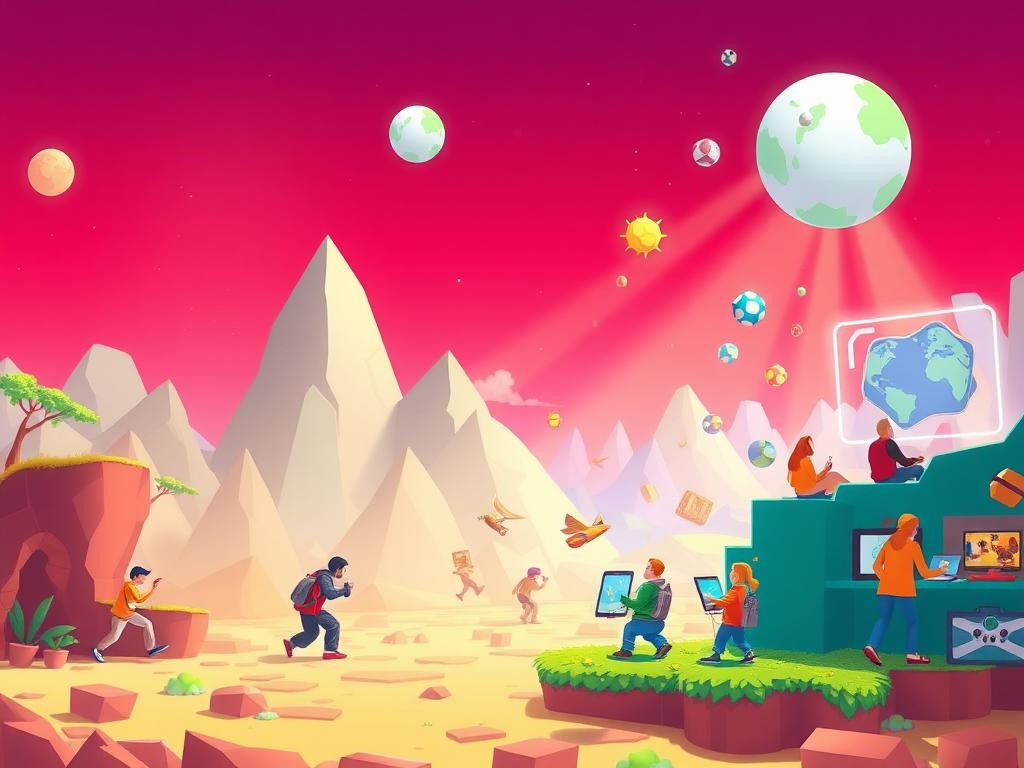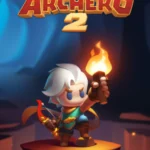The Odyssey of Pixels: A Definitive History of Browser Games from Flash’s Zenith to HTML5’s Unprecedented Revolution
The digital landscape, ever-evolving, has been shaped profoundly by the unassuming yet revolutionary medium of browser games. From simple text-based diversions to complex multiplayer sagas, these instant-play experiences have democratized gaming, making it accessible to anyone with an internet connection. This article embarks on an expansive journey through the fascinating history of browser games, tracing their humble origins through the dazzling era of Flash, the pivotal transition from Flash to HTML5, and their continued evolution of online games into the sophisticated, cross-platform experiences we enjoy today. We’ll explore the technical shifts, cultural impacts, and the vibrant communities that have defined this unique segment of gaming history 2025 and beyond. Prepare to dive deep into the web games history, uncovering the forces that drove their innovation and solidified their place in the pantheon of interactive entertainment.
The Nascent Seeds: Early Web Interactions and the Pre-Flash Era
Before the ubiquity of broadband and the visual richness of later web technologies, the seeds of browser games were sown in a much simpler digital garden. The concept of networked gaming wasn’t new; Multi-User Dungeons (MUDs) and Bulletin Board System (BBS) games, primarily text-based, had cultivated communities of online players for years. These early precursors, while not strictly “browser games” in the modern sense, established the fundamental appeal of shared, persistent digital worlds accessible remotely. They demonstrated an innate human desire for interactive escapism and social connection through a network. As the World Wide Web began to take shape in the early 1990s, the potential for integrating these experiences directly into a browser, bypassing the need for dedicated client software, slowly became apparent.
The earliest forms of browser-based interactivity were rudimentary. HTML, the foundational language of the web, was designed for documents, not dynamic applications. Initial “games” were often just static images with image maps, allowing users to click on different areas to navigate through a branching narrative or simple puzzle. JavaScript, introduced in 1995, marked a significant turning point, enabling client-side scripting. This allowed for basic animations, form validation, and, crucially, simple interactive elements without requiring a server roundtrip for every action. Early JavaScript games were often minigames like “Pong” or “Tic-Tac-Toe,” coded directly into a web page. Their graphics were primitive, usually created with basic HTML elements or small GIF images, and their gameplay was limited by the processing power of the era’s computers and the nascent state of browser technologies.
Another significant development was Java Applets. Sun Microsystems introduced Java in 1995, and its promise of “write once, run anywhere” was particularly appealing for web development. Java applets were small applications embedded within a web page, capable of far more complex graphics and logic than pure JavaScript at the time. Many early online games, including some of the first true multiplayer experiences accessible via a browser, were built as Java Applets. However, Java Applets suffered from slow loading times due to their larger file sizes, security concerns that led to frequent updates and permissions pop-ups, and compatibility issues across different browsers and Java Virtual Machine versions. Despite these hurdles, Java applets provided a glimpse into the future of rich, interactive web content, paving the way for more streamlined and performant technologies that would soon dominate the landscape of online game development. This initial period was one of experimentation, where developers grappled with the limitations of the web, yet persisted in pushing its boundaries, laying the groundwork for the explosion of browser games that was just around the corner.
The Flash Phenomenon: A New Era of Browser Gaming Evolution
The true turning point in the history of browser games arrived with the advent of Macromedia Flash (later Adobe Flash). Introduced in 1996 as FutureSplash Animator, it quickly became the de facto standard for interactive web content. Flash offered a robust environment for creating vector graphics, complex animations, and interactive elements with relative ease, all packaged in a lightweight file format that loaded quickly even on dial-up connections. Its ActionScript programming language provided developers with the tools to build sophisticated logic, leading to an unprecedented boom in Flash games.
The proliferation of Flash was nothing short of a revolution. It democratized online game development, allowing individual animators and small teams to create compelling experiences without needing deep programming knowledge or expensive development kits. This low barrier to entry fostered an incredible outpouring of creativity. Websites like Newgrounds, Miniclip, and Kongregate emerged as epicenters for Flash games, hosting millions of titles ranging from simple arcade games to elaborate RPGs and story-driven adventures. These platforms often featured user-generated content, complete with rating systems and comment sections, building vibrant communities around the games.
Iconic Flash games became household names, often spread virally through email and social media. Titles like “Stick Death,” “Happy Wheels,” “Age of War,” and “Line Rider” captivated millions with their innovative mechanics, quirky humor, or surprising depth. “Runescape,” initially a browser-based RPG, demonstrated the potential for persistent online worlds within the Flash framework, attracting a massive player base. These games were not just distractions; they were cultural phenomena, influencing game design paradigms and introducing countless individuals to the joy of interactive entertainment. The sheer accessibility of Flash games – no downloads, no installations, just click and play – made them incredibly popular in schools, offices, and homes worldwide. This period represents the “Golden Age” of browser gaming evolution, a time when Flash was king, and the web was transforming into a dynamic, interactive playground, forever etching its legacy into web games history. Many players discovered their passion for gaming through these accessible titles, laying the groundwork for a broader engagement with interactive entertainment.
The Rise of the Casual Empire: The Golden Age of Classic Browser Games
With Flash firmly established as the dominant platform, the early to mid-2000s witnessed the flourishing of what can truly be described as the “Golden Age” of classic browser games. This era was characterized by an explosion of casual, highly addictive titles that capitalized on the instant-play nature of the web. These weren’t necessarily graphically intensive or narrative-driven blockbusters, but rather ingenious, often deceptively simple games designed for short, engaging play sessions. Puzzle games like “Bejeweled” and “Zuma” found massive audiences, their match-three mechanics and satisfying feedback loops proving incredibly compelling. Arcade-style games, skill challenges, and physics-based puzzles also thrived, demonstrating that compelling gameplay could trump technical prowess.
Beyond the single-player experience, this period also saw the rise of sophisticated multiplayer browser games. While “Runescape” continued its impressive run as a prominent browser-based MMORPG, new genres began to emerge. Browser-based strategy games, often persistent and time-gated, like “OGame” and “Travian,” gained immense popularity. These games allowed players to manage empires, build armies, and engage in diplomacy or warfare over days, weeks, or even months, fostering dedicated communities and introducing many to the grand strategy genre without the need for hefty client downloads. The social aspect was paramount, as players formed alliances and rivalries, deepening their engagement.
The advent of social media platforms, particularly Facebook, further amplified the reach of online game development within the browser. Games like “FarmVille,” “Mafia Wars,” and “Candy Crush Saga” became cultural phenomena, leveraging social network features like inviting friends, sharing progress, and sending in-game gifts. This integration transformed casual gaming into a widespread social activity, introducing millions to gaming who might not have considered themselves “gamers” before. These games pioneered effective monetization models, moving beyond simple advertising to embrace microtransactions for virtual currency, in-game items, and expedited progress. This era solidified the business model for free-to-play online games, a model that continues to dominate much of the gaming industry today. The Golden Age of classic browser games was a testament to the power of accessibility, community, and addictive design, leaving an indelible mark on the broader evolution of online games and setting the stage for future innovations in browser gaming evolution.
The Technical Tides Turn: Flash’s Decline and HTML5’s Ascent
Despite its undeniable success and cultural impact, Flash began to show cracks in its foundation as the 2000s drew to a close. Several critical issues combined to initiate its gradual decline, paving the way for a new open web standard: HTML5. The first major chink in Flash’s armor was its proprietary nature. Owned by Adobe, Flash required users to install a specific plugin, which often lagged behind in terms of security updates and created compatibility headaches across different operating systems and browser versions. Security vulnerabilities became a recurring problem, making Flash a frequent target for exploits and malware. This necessitated constant updates, which, while crucial, often disrupted user experience.
Performance was another significant hurdle. While initially a marvel, Flash content, especially complex games, could be resource-intensive, leading to high CPU usage, battery drain on laptops, and frequent crashes. This was exacerbated by the lack of proper hardware acceleration in many early Flash implementations, particularly for 3D graphics. However, the most significant blow to Flash’s dominance came with the rise of mobile computing. When Apple introduced the iPhone in 2007, it famously (and controversially) decided not to support Flash, citing its performance issues, security concerns, and impact on battery life. Steve Jobs’ “Thoughts on Flash” in 2010 was a scathing indictment, effectively signing Flash’s death warrant for mobile devices. Given the rapid shift towards mobile browsing, this decision left Flash games largely inaccessible on the burgeoning smartphone market, a massive demographic it could not afford to lose.
Simultaneously, open web standards were undergoing a significant revitalization. HTML5, the fifth major revision of the core language of the World Wide Web, began to gain traction. Alongside CSS3 for styling and advanced JavaScript for interactivity, HTML5 promised to deliver multimedia and interactive content natively, without the need for plugins. Key features like the `
The HTML5 Revolution: Rebuilding the Web Game Landscape
The deprecation of Flash wasn’t an immediate death but a gradual transition, during which HTML5 emerged as the undisputed successor, completely rebuilding the web game landscape. This new era, driven by open web standards (HTML5, CSS3, and JavaScript), brought unprecedented capabilities directly into the browser, fundamentally changing how online game development was approached. The core of this revolution lay in several key HTML5 APIs that addressed the shortcomings of Flash and opened up entirely new possibilities.
The `
Beyond graphics, HTML5 also enhanced other crucial aspects of game development. The Web Audio API provided sophisticated control over audio, allowing for dynamic soundscapes, spatial audio, and low-latency sound effects essential for immersive gameplay. Crucially, WebSockets offered a persistent, bidirectional communication channel between the browser and the server, making real-time multiplayer experiences far more robust and efficient than previous polling-based methods. This was vital for genres like .io games and massively multiplayer titles.
The “Dot-io” (.io) game phenomenon perfectly encapsulates the early success and potential of HTML5. Games like Agar.io, Slither.io, and Minefun.io captured millions with their simple yet addictive gameplay, real-time multiplayer action, and the ability to jump in and play instantly without any downloads. These games became viral sensations, demonstrating that the instant accessibility of HTML5 games, combined with modern web capabilities, could create compelling and widely popular experiences.
The transition to HTML5 also meant inherent cross-platform compatibility. Unlike Flash, which struggled on mobile, HTML5 games could run seamlessly across desktops, laptops, tablets, and smartphones, adapting to different screen sizes and input methods. This universality became a cornerstone of modern browser gaming evolution, ensuring that games could reach the widest possible audience. The HTML5 revolution was not just a technical upgrade; it was a philosophical shift towards an open, accessible, and high-performance web, establishing the foundation for the future of browser games and truly cementing its place in web games history.
Mobile’s Influence and Cross-Platform Imperatives
The explosion of smartphones and tablets in the late 2000s and early 2010s represented another seismic shift in the history of browser games. The mobile revolution didn’t just introduce new devices; it fundamentally altered user expectations for accessibility, touch-based interaction, and on-the-go entertainment. Flash’s inability to adapt to this mobile-first paradigm was a major factor in its decline, but HTML5 was perfectly positioned to capitalize on it, making cross-platform compatibility an imperative for any serious online game development.
Mobile devices brought forth a new set of challenges and opportunities. Screen sizes varied wildly, from small smartphone displays to larger tablets, necessitating responsive design that could fluidly adapt game layouts and interfaces. Touch controls became paramount, replacing the mouse and keyboard as primary input methods. Developers of HTML5 games had to rethink UI/UX to accommodate taps, swipes, and pinches, moving away from traditional click-and-point mechanics. This often led to simpler, more intuitive game designs, especially in the casual space, where quick, easy-to-learn interactions were key. Games like “2048” or “Flappy Bird” (though an app, its mechanics influenced web games) demonstrated the power of minimalist, touch-friendly design.
The concept of Progressive Web Apps (PWAs) further blurred the lines between native apps and web experiences. PWAs are web applications that can be installed on a user’s home screen, offer offline capabilities, push notifications, and access device features, all while running directly from the browser engine. This allowed browser games to feel more like native applications, increasing engagement and retention without the friction of app store downloads and updates. For developers, this meant reaching a wider audience without the complexities of managing multiple native app versions across different operating systems. The seamless integration of PWAs signifies a crucial step in the browser gaming evolution, promising a future where the distinction between web and native becomes increasingly irrelevant.
The imperative for cross-device compatibility isn’t just about reaching more players; it’s about providing a consistent, high-quality experience regardless of the device. Players expect to be able to pick up a game on their desktop, switch to their tablet, and continue playing on their phone, often seamlessly through cloud saves and synchronized progress. This has pushed online game development towards robust back-end infrastructures and flexible front-end architectures that can deliver this fluid experience. The mobile revolution didn’t just add another screen for HTML5 games; it fundamentally reshaped the expectations for how, when, and where games are played, solidifying cross-platform functionality as a cornerstone of modern evolution of online games and a defining characteristic in the continuing web games history.
Beyond the Browser: Hybrid Models and Cloud Gaming
As HTML5 games matured, the boundaries of what constitutes a “browser game” began to blur, leading to the emergence of hybrid models and the rise of cloud gaming. While traditional browser games are designed to run exclusively within a web browser, developers and tech companies started exploring ways to leverage web technologies in new contexts, expanding their reach and capabilities. One significant hybrid model involves frameworks like Electron. Electron allows developers to build desktop applications using web technologies (HTML, CSS, and JavaScript). This means that a game originally developed as an HTML5 game can be easily packaged into a standalone desktop application for Windows, macOS, and Linux. Many popular applications and even games (like the original “Slither.io” desktop client) have adopted this approach, offering a native-like experience while benefiting from the rapid development and cross-platform compatibility inherent in web technologies. This represents a significant step in the browser gaming evolution, showing that web tech is not confined to the browser tab.
The most transformative “beyond the browser” development for online game development is cloud gaming. Services like Google Stadia (now defunct, but a pioneer), NVIDIA GeForce Now, Xbox Cloud Gaming, and Amazon Luna stream games directly to a user’s device, with the actual game processing happening on powerful remote servers. Critically, many of these services are accessible directly through a web browser, often without any special software or plugins. This means that even graphically intensive AAA titles can effectively become “browser games” in the sense that they are played through a web interface. The user’s device simply receives a video stream and sends input commands, making the hardware requirements negligible. This democratizes access to high-fidelity gaming, removing the barrier of expensive consoles or gaming PCs. While the games themselves are not technically “running” in the browser, the browser acts as the portal, a testament to the web’s increasing capability as a universal platform for content delivery. This pushes the definition of “browser game” to its very limits, showcasing how far evolution of online games has come.
Furthermore, the rise of blockchain technology and NFTs has started to impact web games history. Many play-to-earn and NFT-based games operate primarily through web interfaces, leveraging browser-based wallets and decentralized applications. While still in their early stages, these games represent another frontier for web-based interactivity, often accessible with just a browser and a crypto wallet. These developments signify a profound shift: the browser is no longer just a container for simple games, but a powerful, versatile portal to a vast and increasingly complex gaming universe, hinting at an exciting future of browser games. You can learn more about the technical underpinnings of cloud gaming by researching articles from major tech publications like The Verge or TechCrunch.
The Evolving Ecosystem: Discoverability, Monetization, and Community
The journey from Flash’s heyday to HTML5’s dominance has profoundly reshaped the entire ecosystem surrounding browser games, particularly concerning discoverability, monetization, and community building. In the early days of Flash, discoverability was largely driven by dedicated portals like Miniclip, Newgrounds, and Kongregate. These sites acted as central hubs, curating and promoting games, often with front-page features that could make a game an overnight sensation. Viral sharing through email and early social media was also a powerful force. While these platforms still exist, the landscape is far more fragmented today. Independent game developers often rely on platforms like itch.io, which prioritizes creator control and community, or leverage direct marketing through social media. Google’s search algorithms and YouTube/Twitch live streams now play a much larger role in game discovery, making SEO and influencer marketing crucial for online game development visibility.
Monetization strategies have also undergone a significant evolution of online games. While early Flash games often relied solely on display advertising, the free-to-play model, popularized by social media games, has become the dominant paradigm for HTML5 games. This includes microtransactions for in-game currency, cosmetic items, power-ups, and accelerated progress. Newer models, such as battle passes, season passes, and subscriptions (e.g., for ad-free experiences or exclusive content), are also prevalent. Furthermore, the burgeoning blockchain gaming space introduces concepts like “play-to-earn,” where players can earn cryptocurrencies or NFTs with real-world value through gameplay, adding another layer of economic complexity to web games history. These models, while potentially lucrative, also introduce ethical considerations around predatory practices and digital ownership, topics that continue to be debated within the gaming community.
Community building has always been vital for online games, but the methods have changed dramatically. In the past, game-specific forums and dedicated portal comment sections were the primary venues for player interaction. Today, platforms like Discord have become central to game communities, offering real-time chat, voice channels, and dedicated spaces for fan art, strategies, and bug reports. Streaming platforms like Twitch and YouTube Gaming have transformed games into spectator sports, fostering communities around content creators who play online games. This not only aids discoverability but also deepens player engagement, turning games into shared experiences even for those not actively playing. The accessibility of browser games often makes them ideal for community-driven content, from speedruns to modding. The evolving ecosystem reflects a maturing industry where developers, players, and content creators are intricately linked, continually redefining how games are made, found, played, and shared, setting the stage for what gaming history 2025 might look like.
The Impact of Independent Developers and Open-Source Tools
The shift from proprietary plugins to open web standards significantly empowered independent developers. With HTML5, CSS3, and JavaScript becoming universal, the barrier to entry for online game development dramatically decreased. Developers no longer needed expensive software licenses or specialized knowledge of a proprietary platform like Flash. Instead, they could leverage a vast array of open-source libraries, frameworks (like Phaser, PixiJS, or Three.js for WebGL), and development tools. This fostered a diverse and vibrant indie scene, leading to innovative game mechanics and artistic styles that might not have flourished under a more closed ecosystem. The spirit of experimentation, which characterized the early history of browser games, was rekindled.
Furthermore, the open-source nature of web technologies encouraged collaboration and knowledge sharing. Communities formed around specific frameworks, providing support, tutorials, and shared codebases. This collective intelligence accelerated the browser gaming evolution, allowing developers to build increasingly complex and visually stunning HTML5 games. The “democratization” of online game development also meant that a wider range of voices and perspectives could contribute to the web games history, leading to more diverse game genres and themes. This independent spirit is a core pillar of the modern browser game landscape, enabling continued innovation beyond established studios.
Current State and The Future of Browser Games: Gaming History 2025 and Beyond
As we stand in the midst of gaming history 2025, the future of browser games is brighter and more dynamic than ever. HTML5 has unequivocally triumphed, solidifying its position as the standard for online game development. The capabilities of modern browsers, coupled with ever-improving hardware, mean that the line between a browser game and a native application continues to blur, often imperceptibly. We are witnessing games with console-quality graphics and complex physics simulations running directly in a web tab, a testament to the incredible journey through the history of browser games.
A key technology shaping this future is WebAssembly (Wasm). WebAssembly is a low-level binary instruction format for a stack-based virtual machine. It’s designed as a portable compilation target for programming languages, enabling deployment on the web for client and server applications. In simpler terms, Wasm allows developers to write games in languages like C++ or Rust and compile them into highly optimized code that runs at near-native speeds in the browser. This opens the door for bringing computationally intensive games, even AAA titles, to the web without significant performance compromises. Imagine playing “Cyberpunk 2077” or “Red Dead Redemption 2” directly in your browser – Wasm makes this a tangible possibility, pushing the envelope for HTML5 games.
Artificial Intelligence (AI) is another transformative force. From sophisticated Non-Player Characters (NPCs) with realistic behaviors to AI-driven content generation (procedural levels, quests, narratives), AI is making games more immersive and replayable. AI can also enhance game design tools, automating tedious tasks and allowing developers to focus on creative aspects. The integration of AI into browser games will lead to more personalized and adaptive experiences, making each playthrough unique.
Looking further ahead, emerging trends promise to redefine the very nature of online games. WebXR (Web Extended Reality) is an API that enables virtual reality (VR) and augmented reality (AR) experiences directly within the browser. This means that immersive 3D environments and interactive AR overlays could become commonplace in HTML5 games, offering new layers of interaction and sensory engagement without specialized apps. The concept of the metaverse – persistent, interconnected virtual worlds – is also highly relevant. Browser-based platforms could serve as accessible gateways to these metaverse experiences, allowing users to seamlessly jump between different virtual environments and interact with digital assets.
The future of browser games is intrinsically linked to the broader evolution of online games and web technologies. As browsers become more powerful and web standards continue to innovate, the capabilities of browser games will only expand, offering richer, more immersive, and more accessible experiences to billions of users worldwide. The journey from humble pixels to expansive virtual worlds continues, promising an exciting, perhaps even unpredictable, path forward for gaming history 2025 and beyond.
To stay updated on the latest web technologies, you can consult resources from the World Wide Web Consortium (W3C), like W3C Standards.
The Role of Cloud Infrastructure and Serverless Architectures
The continued scalability and performance of modern HTML5 games, especially multiplayer ones, relies heavily on advanced cloud infrastructure and serverless architectures. Traditional game servers can be expensive and complex to manage, especially when dealing with fluctuating player counts. Cloud providers like AWS, Google Cloud, and Azure offer scalable computing resources, allowing online game development to dynamically adjust server capacity based on demand, ensuring smooth gameplay even during peak hours.
Serverless functions (e.g., AWS Lambda, Google Cloud Functions) further streamline development by allowing developers to focus on writing game logic without managing servers. This “function-as-a-service” model is particularly well-suited for event-driven game mechanics, leaderboards, and user authentication, reducing operational overhead and accelerating development cycles. This behind-the-scenes evolution is crucial for the ongoing browser gaming evolution, enabling developers to build more ambitious and resilient HTML5 games without prohibitive infrastructure costs, pushing the boundaries of the future of browser games. This unseen yet vital infrastructure forms the backbone of the modern web games history.
Preserving the Legacy: Archiving and Emulation of Classic Browser Games
The rapid pace of technological change, while driving innovation in evolution of online games, also presents a significant challenge: the preservation of digital heritage. For browser games, this challenge became acutely apparent with the demise of Flash. When Adobe officially ended support for Flash Player at the end of 2020, millions of Flash games, animations, and interactive web experiences instantly became inaccessible to most users. This created a digital dark age for a significant portion of web games history, threatening to erase a vibrant and culturally significant chapter.
Fortunately, dedicated communities and organizations recognized this impending loss and sprang into action. Initiatives like the Flashpoint project (BlueMaxima’s Flashpoint) emerged as monumental efforts to archive as many Flash games and animations as possible. This involves not just downloading the SWF files but also cataloging them, developing custom launchers, and creating local server environments to emulate the necessary network interactions. Flashpoint alone has preserved tens of thousands of classic browser games, making them playable offline on modern systems. This is an immense undertaking, requiring significant volunteer effort and technical expertise.
Another crucial development in the preservation effort is Ruffle. Ruffle is an open-source Flash Player emulator written in Rust. Unlike browser plugins (which are no longer supported), Ruffle runs directly within modern web browsers using WebAssembly. This means that websites can embed Ruffle, allowing Flash games to play directly in a user’s browser without any downloads or installations, much like they did in Flash’s prime. This project is ongoing, with compatibility continuously improving, and it promises to bring countless classic browser games back to life on the live web, ensuring that future generations can experience this unique period of browser game timeline.
The importance of digital preservation extends beyond just Flash games. As web technologies continue to evolve, future compatibility issues could arise even for HTML5 games. Efforts to archive codebases, document development environments, and create robust emulation tools are vital for ensuring that the rich and diverse web games history remains accessible for researchers, historians, and nostalgic players. These preservation efforts are a testament to the cultural value of online game development and the enduring impact of classic browser games. They underline that gaming history 2025 is not just about what’s new, but also about what we remember and choose to keep.
The Educational and Cultural Significance of Browser Games
Beyond entertainment, browser games have played a significant role in education and cultural dissemination. Their accessibility has made them ideal tools for learning. Educational browser games, often covering subjects from mathematics and science to history and languages, have provided engaging and interactive ways for students of all ages to learn. Many teachers and parents utilized educational browser games to supplement traditional learning methods, making complex topics more digestible and fun.
Culturally, browser games, especially Flash games, served as a creative outlet for independent artists and animators. They often explored avant-garde themes, social commentary, and experimental gameplay mechanics that might not have found a home in mainstream gaming. This rich tapestry of diverse voices contributed significantly to the broader evolution of online games, demonstrating the medium’s flexibility and power as a form of artistic expression. The ability for anyone with an internet connection to publish and share their creations fostered a unique grassroots culture that heavily influenced internet memes and early online communities, leaving an indelible mark on web games history.
Key Milestones and the Browser Game Timeline
To truly grasp the magnitude of the history of browser games, it’s essential to highlight some of the pivotal milestones that shaped its trajectory, forming a distinct browser game timeline. Each point marks a significant technological leap, a cultural shift, or the emergence of a genre that redefined what was possible within the browser.
* **1990s – Early Experiments:**
* **1995: Introduction of JavaScript:** Enabled basic client-side interactivity, moving beyond static HTML pages. Simple games like Tic-Tac-Toe began to appear.
* **1995: Java Applets:** Though clunky, these allowed for more complex graphical games like “Pong” or early puzzle games to be embedded in web pages, showcasing the potential for richer online game development.
* **1996: Macromedia Flash (FutureSplash Animator):** The game-changer. Its vector graphics, animation tools, and scripting language opened the floodgates for accessible Flash games.
* **Early 2000s – The Flash Golden Age:**
* **2001: Runescape:** One of the earliest and most enduring browser-based MMORPGs, demonstrating the viability of persistent online worlds within the browser. Its continued browser gaming evolution is remarkable.
* **2000s: Proliferation of Flash Portals:** Sites like Miniclip, Newgrounds, and Kongregate became central hubs for classic browser games, fostering massive user communities and an explosion of diverse titles.
* **Mid-2000s: Emergence of Browser Strategy Games:** Games like “OGame” and “Travian” introduced persistent, turn-based or real-time strategy experiences that redefined casual yet deep multiplayer engagement.
* **Late 2000s – The Mobile Disruption and HTML5 Dawn:**
* **2007: Apple iPhone Launch (No Flash Support):** A critical turning point. The lack of Flash on iOS devices highlighted its limitations and accelerated the need for open-web alternatives.
* **2008: HTML5 Draft Published:** While not fully adopted, the formal proposal of HTML5 with its `
* **2010s – The HTML5 Revolution and .io Phenomenon:**
* **2011: WebGL Introduction:** Enabled hardware-accelerated 3D graphics directly in the browser, opening up new frontiers for visual fidelity in HTML5 games.
* **2013-2014: HTML5 Broad Adoption:** Major browsers consistently supported HTML5, making it a viable and robust platform for complex games.
* **2015: Agar.io Launch:** Kicked off the “Dot-io” game craze, showcasing the power of instant-play, real-time multiplayer HTML5 games, contributing significantly to the evolution of online games.
* **2020s and Beyond – The Future of Browser Games:**
* **2020: Adobe Flash End-of-Life:** The official deprecation of Flash spurred major preservation efforts and solidified HTML5’s dominance.
* **Ongoing: WebAssembly (Wasm) Growth:** Enabling near-native performance for complex applications and games in the browser, potentially allowing AAA-quality titles to run on the web.
* **Emerging: WebXR and Metaverse Concepts:** The web browser as a gateway to immersive VR/AR experiences and interconnected virtual worlds, shaping gaming history 2025 and beyond.
This browser game timeline illustrates a continuous thread of innovation, driven by technical advancements and changing user expectations, culminating in the sophisticated and diverse landscape of HTML5 games we enjoy today. It’s a testament to the adaptability and enduring appeal of gaming directly within the web environment, making it a crucial part of web games history. You can explore more about web standards on reputable sources like Mozilla Developer Network (MDN) web docs.
From Niche to Mainstream: The Cultural Impact of Browser Games
The history of browser games is not merely a technical narrative; it’s a story of cultural impact and widespread accessibility that transformed gaming from a niche hobby into a mainstream phenomenon. Before the browser, gaming was largely confined to dedicated consoles or PC titles that required installation, often expensive hardware, and a degree of technical savvy. Flash games, and later HTML5 games, shattered these barriers, making interactive entertainment available to anyone with an internet connection, regardless of their device or gaming background.
The “click and play” nature of free online games no download was revolutionary. It removed friction, inviting millions of casual players who might never have picked up a console controller or installed a PC game. This accessibility was a primary driver of the browser gaming evolution, introducing gaming to demographics previously untouched, including office workers taking quick breaks, students unwinding between classes, and families sharing simple, fun experiences. The simplicity and instant gratification of many classic browser games like “Solitaire” clones, “Mahjong,” or “Bubble Shooter” captivated a vast audience, paving the way for the broader acceptance of digital entertainment.
The cultural impact extended to online communities and viral phenomena. Flash animations and games often became early internet memes, shared widely across forums, instant messaging, and early social networks. This grassroots dissemination of content fostered a unique sense of shared digital culture. Websites dedicated to unblocked games became havens for students, allowing them to engage with their favorite titles even within restricted school networks, further cementing the cultural relevance of these games. The rise of .io games continued this trend, with their simple mechanics and competitive multiplayer fostering a new wave of viral hits.
Beyond entertainment, browser games proved to be powerful tools for education and advertising. Advergaming, where companies developed simple branded games, became a popular marketing strategy. Educational institutions embraced educational browser games to make learning more interactive and engaging. This widespread application further demonstrated the versatility and pervasive reach of browser-based experiences.
In essence, browser games normalized gaming for a global audience, proving that sophisticated installations and dedicated hardware weren’t always necessary for compelling interactive experiences. They served as a gateway, transforming countless individuals into lifelong gamers and directly influencing the design and distribution models of many modern video games, solidifying their profound place in web games history and shaping broader gaming history 2025. You can read more about the cultural impact of Flash on academic journals that study internet culture.
Conclusion: The Enduring Legacy and Infinite Horizons of Browser Gaming
The journey through the history of browser games, from their embryonic text-based forms and the pioneering Java Applets, through the captivating dominance of Flash, and finally to the transformative era of HTML5, reveals a remarkable trajectory of innovation and accessibility. We’ve witnessed a profound evolution of online games, driven by technological breakthroughs, changing user demands, and the relentless creativity of developers. The transition from Flash to HTML5 was more than a technical upgrade; it was a fundamental shift towards open standards, cross-platform compatibility, and an even broader democratization of gaming.
Today, HTML5 games, powered by advancements like WebGL, WebSockets, and WebAssembly, offer experiences that rival native applications in visual fidelity and complexity, blurring the lines between what constitutes a “browser game” and a traditional downloadable title. The browser game timeline continues its rapid expansion, integrating with mobile devices, cloud gaming, and even nascent metaverse concepts. The enduring legacy of classic browser games is actively being preserved through dedicated archiving efforts, ensuring that this rich chapter of web games history remains accessible for generations to come. As we look towards gaming history 2025 and beyond, the future of browser games appears boundless. The browser, once a simple document viewer, has evolved into a powerful and universal gaming platform, continuously pushing the boundaries of interactive entertainment and solidifying its role as a vital force in the ever-expanding universe of digital play. Its simplicity, instant access, and continuous browser gaming evolution ensure its relevance for years to come.




































































